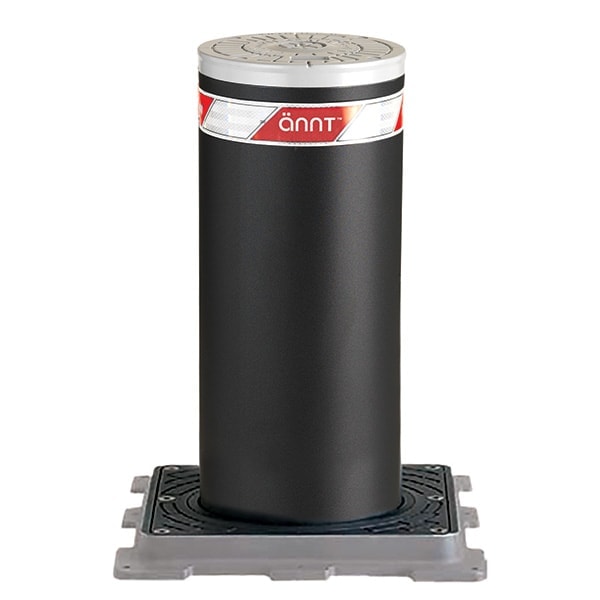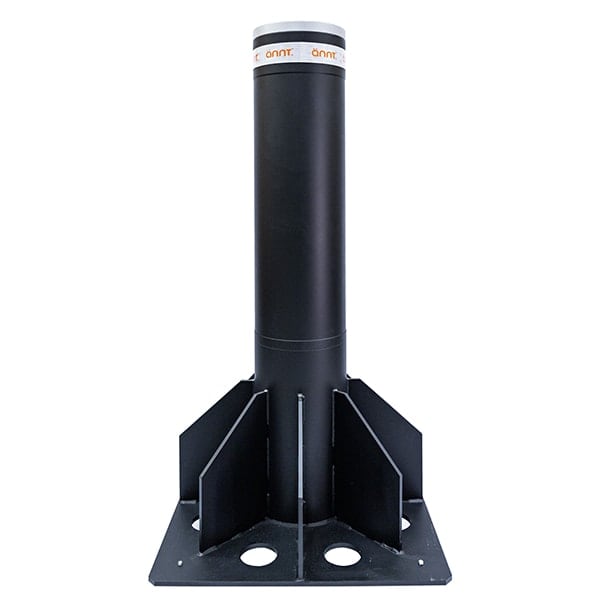Bollards are essential components of asset protection, serving as physical barriers to prevent unauthorized vehicle access and protect pedestrians, buildings, and infrastructure from potential threats. However, concrete bollards, while durable, are susceptible to wear and tear over time, making their timely replacement crucial for maintaining optimal security.
Common Reasons for Replacing Concrete Bollards
Common reasons for replacing concrete bollards include visible damage from vehicle impact, cracking or crumbling due to weathering and age, and the need to upgrade security measures. Aging or damaged bollards not only compromise their effectiveness but also pose potential safety hazards. Replacing them promptly can mitigate risks and ensure reliable asset protection. If you need assistance with assessing your current bollard situation, reach out to our Perimeter Security Experts for a consultation.
Benefits of Replacing Aging Concrete Bollards
The benefits of replacing aging concrete bollards are multifold. New bollards offer improved durability, enhanced visibility for drivers and pedestrians, and the opportunity to upgrade to more secure and impact-resistant materials, such as steel or polymer. Timely replacement also maintains a professional and well-kept appearance for the premises, projecting a commitment to safety and security. By addressing bollard replacement proactively, property owners and managers can safeguard their assets, minimize liability concerns, and provide a safer environment for all.
Choosing the Right Bollard Material
When it comes to replacing concrete bollards, selecting the appropriate material is crucial. While concrete bollards have been a popular choice for many years, advancements in materials have led to the development of more durable and cost-effective options. Two commonly used materials for bollards are steel and polymer.
Steel bollards are renowned for their exceptional strength and durability. According to a study by Wichita State University (source), steel bollards can withstand high-speed impacts, making them an ideal choice for high-security applications. Additionally, steel bollards are resistant to weathering and require minimal maintenance, ensuring a longer lifespan. For customized steel bollard solutions, explore our ANNT Products range.
Polymer bollards, on the other hand, offer a lightweight and cost-effective alternative. While not as robust as steel, polymer bollards are highly flexible and can absorb significant impact forces without sustaining permanent damage. This makes them suitable for applications where aesthetics and pedestrian safety are prioritized over maximum security.
Compared to concrete bollards, both steel and polymer options offer superior durability and resistance to cracking, chipping, and weathering. Furthermore, the installation and replacement of steel and polymer bollards are generally more straightforward and cost-effective than their concrete counterparts. A study by the International Window Association (source) highlights the effectiveness of steel bollard systems in mitigating vehicle impacts.
The Bollard Replacement Process
Replacing concrete bollards is a multi-step process that requires careful planning and execution. According to the Primer on Impact Protection for Critical Transportation by the Federal Highway Administration, the initial assessment is crucial. This involves evaluating the existing bollards, identifying any damage or wear, and determining the level of protection required for the site.
Once the assessment is complete, the removal of old bollards can begin. This step should be carried out with caution, as concrete bollards can be heavy and difficult to dislodge. Proper safety equipment, such as hard hats and steel-toed boots, should be worn by all personnel involved in the removal process.
The installation of new bollards is the next critical step. The Guide to Active Vehicle Barrier (AVB) Specification and Selection by the Cybersecurity and Infrastructure Security Agency emphasizes the importance of following manufacturer instructions and adhering to industry best practices. Proper site preparation, including excavation and foundation work, may be necessary before the new bollards can be installed.
Throughout the replacement process, safety should be the top priority. Work zones should be clearly marked, and pedestrian and vehicular traffic should be redirected away from the area. All personnel should receive proper training on the safe handling of equipment and materials.
Cost Factors in Bollard Replacement
The cost of replacing concrete bollards can vary significantly depending on several factors. One of the primary cost drivers is the material chosen for the new bollards. According to the 2022 Grid Energy Storage Technology Cost and Performance Assessment by the Pacific Northwest National Laboratory, different materials like steel, polymer, and concrete have varying upfront and lifecycle costs.
Labor costs also play a significant role in the overall cost of bollard replacement. The complexity of the installation process, site conditions, and the number of bollards being replaced can impact labor expenses. The Cost Estimating Guide for Road Construction by the USDA Forest Service provides insights into estimating labor costs for similar construction projects.
Other factors that can influence the cost of bollard replacement include site accessibility, permitting requirements, and the need for additional site preparation or landscaping work. It is essential to consider all these factors and obtain detailed quotes from reputable bollard suppliers and installers to accurately estimate the overall cost of the project.
Choosing the Right Bollard Partner
Replacing concrete bollards is a significant investment that requires expertise and precision. Partnering with an experienced and reputable bollard provider is crucial to ensure the project’s success. When selecting a bollard partner, consider the following factors:
- Industry Experience and Reputation: Look for a company with a proven track record in the bollard industry. Established providers with years of experience will have in-depth knowledge of bollard materials, installation techniques, and regulatory requirements. Review their portfolio, testimonials, and industry recognition to gauge their credibility and expertise.
- Product Quality and Range: Evaluate the provider’s product offerings to ensure they offer high-quality bollards that meet your specific needs. A reputable supplier should have a diverse range of bollard materials, styles, and sizes to accommodate various applications and security levels. Prioritize providers that use durable, impact-resistant materials and adhere to industry standards for safety and performance.
- Installation and Support Services: Consider whether the bollard provider offers comprehensive installation services or partners with experienced installers. Professional installation is crucial for ensuring the bollards are properly positioned and secured for optimal protection. Additionally, look for providers that offer ongoing support, maintenance, and repair services to maintain the longevity and effectiveness of your bollard system.
- Customization Options: Depending on your specific requirements, you may need customized bollard solutions. Look for a provider that offers customization options, such as custom sizes, colors, or finishes, to ensure the bollards seamlessly integrate with your property’s aesthetics and security needs.
By carefully evaluating potential bollard partners based on these factors, you can increase the likelihood of a successful bollard replacement project that meets your security, durability, and aesthetic requirements. Our Perimeter Security Experts are here to help you navigate this process and provide you with top-quality ännt Products for your next project. Contact us today to get started!



